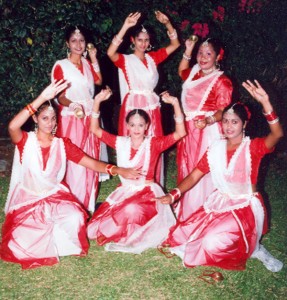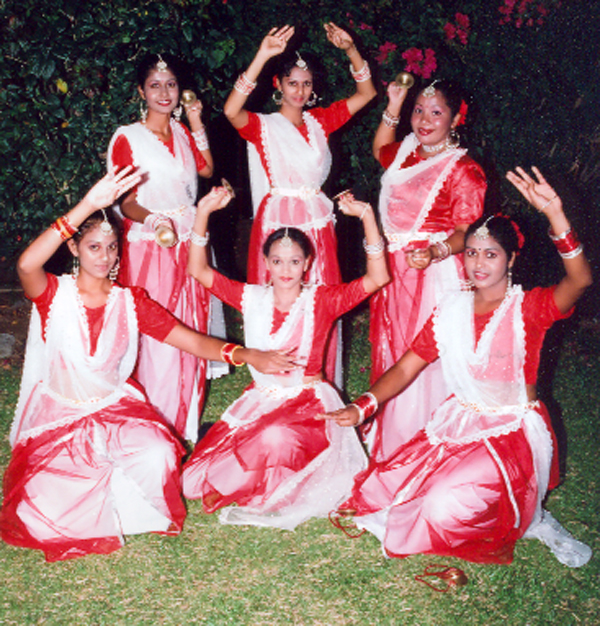‘All walls crumble where art is concerned’
As a part of their diplomatic strategy it is common practice for nations to maintain cultural outreach activities in foreign countries with which they have relations. There are many reasons for this.

The ambassadors may say quite a lot, but the main objective is not merely to provide entertainment for the population in the countries which host them. The first reason is often political; they will have a diplomatic mission in that country primarily for political reasons in the first place. The second, and sometimes the first, is economic, which, too, is often responsible for the presence of the embassy in the country. Sometimes it is because of a ‘diaspora’; there might be a large migrant community or several citizens of the particular nation working in the foreign country and the mission may be there to oversee their interests.
Guyana is at peace with the world. Two of its closest neighbours appear passionately convinced that portions of Guyana’s territory − land, sea and river − belong to them and they lose little opportunity to ensure that this is not forgotten through occasional acts of sabre-rattling, but Guyana has no political enemies. Neither does it have a local market the size of China or India to attract seriously aggressive trade interests. It has friendly relations with many countries and almost all of them have or have had prolific cultural outreach programmes in Guyana. They seem to have considered it so important that, in addition to their embassies or high commissions, some of them maintain permanent institutions like cultural centres to promote their culture and their art forms in Guyana.
Nations certainly recognise how powerful the arts can be in helping them to achieve their various purposes. According to the Indian High Commission in Georgetown, “dances, like music, know no geographic boundaries, no linguistic barriers and no racial division. All walls crumble where art is concerned. It is a great unifying and integrating force.” The countries that have diplomatic relations with Guyana clearly recognize the power of that force which has driven their consistent practice of cultural outreach carried out largely through artistic performance or exhibition.
India is one of those nations with a firm belief in that assertion about art quoted by its high commission. It is one of those with a strong and consistent cultural outreach programme in Guyana, and among those who have reinforced this and deepened friendly relations through the permanent establishment of an institution devoted entirely to the performing arts.
The Indian Cultural Centre in Georgetown (ICC) provides training in music and dance directed by a succession of many highly qualified tutors. It is a very important agent. It serves the purposes of India very well while making an undeniable contribution to the arts in Guyana in general and the arts of India in particular. Indian culture is fortified, Guyanese Indian traditions benefit and the Hindu religion is served because of its close alliance with dance and music through which it is always transmitted. In the process the ICC maintains one of the accomplished and prolific dance groups in Guyana.
India has old and deep historical, political and cultural ties with Guyana. It has played a part in the shaping of Guyanese culture and has a present interest in close partnerships with the country. All of these come together in the performance of the Indian government’s programmes and projects in collaboration with Guyana. There is ongoing technical cooperation in which Guyanese receive training in India in different fields. Each year this cooperation is celebrated and the Indian High Commissioner to Guyana hosts an annual event to mark it.
This year High Commissioner Subit Kumar Mandal hosted a full programme of dance and music to mark ITEC Day. The production was rich in music and dominated by dance, that international language that “knows no geographical boundaries”and “no racial division.” The Indian Cultural Centre Choir performed a number of items which demonstrate the extensive work done at that important institution for Indian culture. But even more than the singing, the performance of the team of musicians, both tutors and students of the centre, were eloquent in this respect.
The ICC’s dance group has largely carried the standard for the institution in various appearances, and was prominent again on this occasion. The group is a part of the present strength that dance has as a performing art in Guyana, achieved because of many factors including the availability of expert training and the acceptance that this is necessary. ICC dancers performed Paramparik Kathak and Nritya from Lucknow Gharana. The kathak is one of the strengths of the group.
However, training in dance in Georgetown is complemented by training in India as well, since Guyanese dancers have gone for studies in India under technical cooperation arrangements. One of the performers on the programme is a student who benefited from this Indian training and now leads a group of dancers in Guyana. Kenrick Cheeks and Group danced Bhangra and Dandiya, a Gujrati folk dance.
These developments in dance are spin-off benefits of Indian interests and these go even beyond the ICC and scholarships/fellowships in India. Indian dance is now at a very high point in Guyana because of the development of other companies. Among the most prominent is the Dharmic Nritya Sangh, a company led by Vindhya Persaud which has become a cultural outreach arm for another institution, the Guyana Hindu Dharmic Sabha.
Performing on the High Commissioner’s programme were the Guyana Hindu Dharmic Sabha students, which gives an indication of the heights attained by that company. It grew to be one of the leading dance outfits in the country partly because of the research in dance forms and the training received by its leaders in India and Guyana. Then, it has been engaging in its own training programme resulting in such appearances by its students. They performed Chap Tilak, described as a vibrant dance of several styles and Äyo Re, a colourful folk dance.
This is an example of the healthy state of Guyanese Indian dance for which the Indian government’s cultural outreach in Guyana is partly responsible. Their statement, however, goes on to say that dance makes all walls and racial divisions crumble. The production went beyond Indian dance to include performances from the African Cultural and Development Association, which has dance classes of its own and provided the items Nzinga and a rather acrobatic interpretive dance. The versatile Guyana Police Force Band was also a part of the production.
There was also a monologue provided by Michael Ignatius that attempted to dramatise the ITEC, the technical and cultural partnership which the programme was celebrating.

